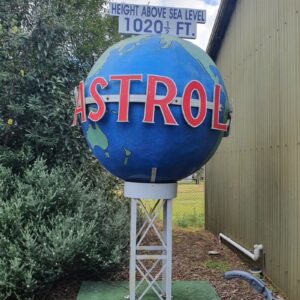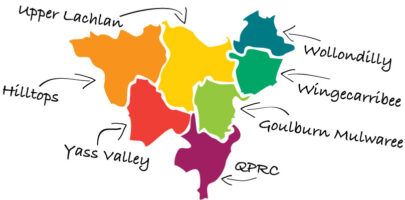
In the 200 years since 1822, Picton, Bargo and Tahmoor have grown and developed with many stories to tell.
STA have worked with leading local Historians and community members to bring you a rich tapestry of stories and images from each town, documenting stories, places and people’s memories of place, and the some of changes that have occurred since then. We warmly invite you to explore each story by clicking on the title link for each towns below…
Observing 200 years since of the opening up of the land to the south west of Sydney that occurred in 1822 and ultimately formed the towns of Picton, Bargo and Tahmoor. The history of this country grows from the living culture of the first people of the Wollondilly area are the Gundungurra, Dharawal and Darug peoples whose ongoing custodianship can be traced back tens of thousands of years.
In the 200 years since 1822, Picton, Bargo and Tahmoor have grown and developed with many stories to tell.
STA have worked with leading local Historians and community members to bring you a rich tapestry of stories and images from each town, documenting stories, places and people’s memories of place, and the some of changes that have occurred since then. We warmly invite you to explore each story.
Do you have a Bargo ∙ Tahmoor ∙ Picton story to tell? We want to hear from you. STA would like to share your memories and stories you have experienced or know about the towns. In particular we are keen to see historic imagery from anytime over the last 200 years and hear the stories of these images. Share your story NOW or email us at [email protected]
STA acknowledge the living culture and spiritual connections to the land for the D’harawal and Gundungurra people and all Aboriginal Nation Groups that may have connections to the Wollondilly area.
Wollondilly Shire is on Aboriginal land and the country of the D’harawal and Gundungurra peoples. While documenting the bicentenary of Bargo, Picton and Tahmoor since European settlement we acknowledge their traditional custodianship and culture over countless generations. The deep connection of Aboriginal people to this country continues a rich traditional of culture and custodianship. May we all walk forward together into the future. Read more about the Aboriginal History of the area at the Wollondilly Shire Council webpage
 Entering the Wollondilly Valley
Entering the Wollondilly Valley
The Castrol Globe was an iconic landmark at Mount Razorback between the1930s to the 1960s. Owned by Wakefield Castrol, the Globe and nearby fig tree become an iconic entry marker that welcomed motorists to Wollondilly and beyond Picton, Tahmoor and Bargo. The globe was located near a picnic area and with spectacular 360o views it was a popular stopping point for a photo and rest. Made of tin with a circumference of 3.4 metre it stood atop a steel tower at 5.3 metre high. The globe was removed when the road route was altered away from the globe in the 1960s.
In 2017 a half size recreation of the globe was lovely created by a local group of historic motoring enthusiasts when it couldn’t be reinstalled in the original position it found a new home at the Wollondilly Heritage Museums at The Oaks where you can still see it today. In homage to this icon of yesteryear STA have transformed an historic image of the globe into wearable art you can have today. Check it out
A Little Bit of history
In 2022 Wollondilly Shire recognises the bicentenary of Bargo, Picton and Tahmoor, three towns that were beyond the limits of legal colonial settlement until 1821. Although there is evidence of European settlement from the early 1800s, there are tens of thousands of years of indigenous history preceding this and the local indigenous communities’ influence continues through the colonial period until today.
The earliest records of Europeans in the area date back to 1795 when white settlers followed the First Fleet’s straying cattle. In 1821 there were still only 36,000 Europeans in the colony. Convicts made up around 40% of the colonial population until the 1820s when free settlers began to occupy most of what is now rural New South Wales.
Since the beginnings of the three towns, as with many regional towns in Australia, the development of transport and infrastructure have been key in the growth of these towns. The development of the Great Southern Road, which later became the Hume Hwy, and the Canberra to Sydney rail line, saw an injection of development into the towns with the changes and growth readily visible as we look at the historic maps. Many of the historic buildings in the area, many of them now heritage listed, developed along those arterial rail and road routes. The Cobb & Co coach company also travelled through the area. Not far from Bargo, the development of the Nepean and Avon Dam’s were also significant in the growth of these towns.
The original inhabitants of the Wollondilly area were the Gundungurra, Dharawal and Darug peoples whose living culture can be traced back tens of thousands of years. During the early colonial years in the Macarthur region, between illness and massacre the local indigenous population was significantly impacted. Descendants still live locally and we invite local elders and members of the indigenous community to tell their stories of the three towns.
Wollondilly Shire including Bargo, Tahmoor and Picton have a rich history. We have put together a list of links for anyone interested in the local Aboriginal and Non-Aboriginal History.
- Picton and District Historical and Family Society Inc.
- The Wollondilly Heritage Centre & Museum
- Wollondilly Historical Page
- Aboriginal History – Wollondilly Shire Council
- Acknowledgment of Country Wollondilly Shire Council
- About Wollondilly (Wollondilly Library Service)
- OUR HERITAGE: Exploring the history behind Macarthur’s suburb names. (Wollondilly Advertiser)
- Picton, New South Wales (Wikipedia)
- Bargo, New South Wales (Wikipedia)
- Tahmoor, New South Wales (Wikipedia)
- Gundungurra Tribal Council Aboriginal Corporation
- Gurangatch vs Mirragang with Aunty Val Mulcahy (ABC Indigenous)
![]()
200 Bargo Tahmoor Picton is a Wollondilly Shire Council project delivered by STA and possible because for the generous contribution of Picton and District Historical and Family Society Inc., The Wollondilly Heritage Museum, Historians Trish Hill, Doreen Lyon, Frank Baker, Marjo Hallowell and Marlane Fairfax.
STA MEMBERSHIP
free & connects you to the STA universe
Reach out to us
[email protected]
0427 938 110
Or by appointment at one of our
Mobile Office locations
PO Box 1323 Goulburn 2580
ABN 67 208 214 681
We acknowledge Aboriginal people as the traditional custodians of the lands where we create, live & work.
© Southern Tablelands Arts. All Rights Reserved










